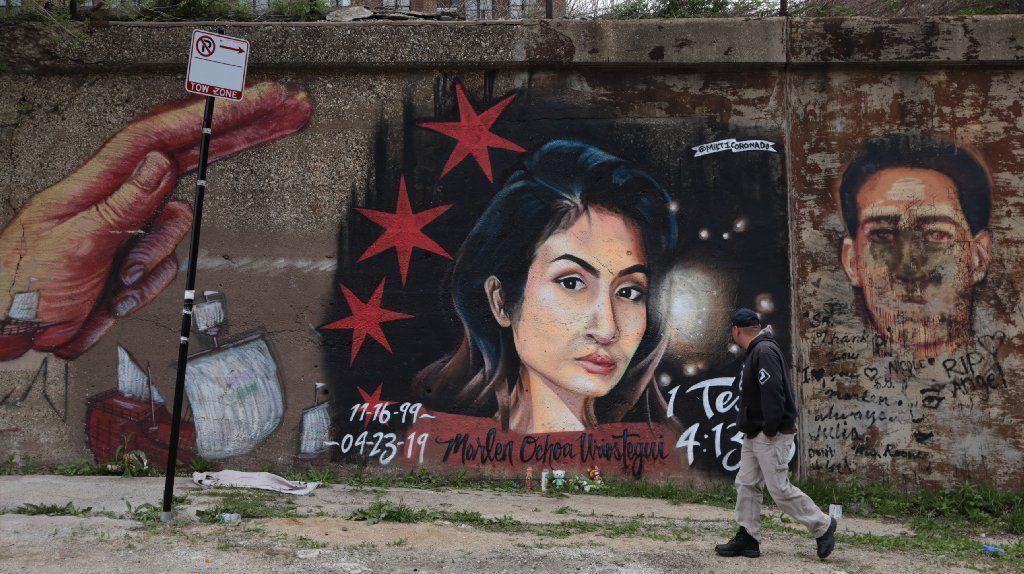A few days ago, I was in the Loop heading northbound on the Brown Line. I was immersed in a book and lost in thought when I started thinking about my route back home. Taking the Pink Line home from the Loop is the easiest option for me, but I was worried about walking the two blocks home from the station around 11 p.m. I’m always mindful of what time and how I’m getting home. I never look forward to walking home from the Pink Line after 10 p.m., but I've managed just fine on the occasions when I've had to.
But on this occasion I was notably more nervous than usual, and I started wondering what was different. It’s tough to fully convey what it feels like to be a woman of color constantly reading headlines about missing women and girls, primarily on the South and West sides.
The Chicago Police Department and FBI are finally considering the possibility that a serial killer is targeting primarily Black women on the South and West sides. It seems that every day, my social media is filled with posts about missing Black and Latinx women in Chicago. Sometimes these disappearances aren't reported on the news, and social media posts seem to be the only attention they get.
The case of Marlen Ochoa-Lopez hit me particularly close to home. The 19-year-old, who was nine months pregnant, was last seen leaving Latino Youth High School next to the California Pink Line station in Little Village. Ochoa-Lopez remains were found weeks three later in a garbage can on the southwest side. She had been strangled, and her baby was taken from her womb. The infant boy, whom one of the three alleged killers took to the hospital, recently opened his eyes but is still in grave condition.
These are painful details to read, and perhaps it might seem irrelevant or inappropriate for a website focused on creating livable streets to report on this case. But creating livable streets means considering all the factors that make people feel unsafe walking, riding transit, biking, or simply existing on the street.
As I got off the Pink Line that night around 11pm, I noticed a man looking at me. I knew I had a few dark blocks to walk to get home, so it put me on edge. I started to walk down the street and he followed behind me. He caught up to me and asked me what time it was. (In fairness, I think his phone really had just died). I told him the time, but I was on edge the whole way home.
I’ve never particularly enjoyed my walk home after I ride the train. Since moving to Little Village, I’ve thought about how well-lit streets makes a huge difference whether I feel safe. Although the neighborhood has a high population density, the lack of light on certain streets creates a feeling of isolation at night and contributes to discomfort for people walking alone. My aversion to walking home at night has only increased as I've heard more and more cases of missing women and girls, even thought I consider myself a pretty brave and street-savvy person.
I think we often view transportation through an isolated lens of an experience in a bus or train, but context matters. It matters where people are exiting public transportation, and what the realities of their communities are. It matters if someone has to wonder whether their walk home from the train is safe. Safety for women and girls on our streets is nuanced. It’s not just about actual safety, but also feeling safe, and perceptions go a long way in shaping our behaviors.
Anyone who says they care about transportation equity in Chicago has to take seriously the headlines and missing women and girls on the South and West sides. At the root of mobility justice (see the Untokening collective's principles of mobility justice for more insight) is the idea that everyone should feel safe and able to move as they please.
So many factors can chip away at that feeling for people in lower-income communities of color. That’s why in some neighborhoods people feel safer staying indoors than playing outside, or choose to drive rather than wait for a bus on a street corner. We need to adopt a community safety and anti-violence lens within sustainable transportation advocacy in order to start building a more comprehensive movement. We need to be willing to unpack what safety means for different communities and build from there.






